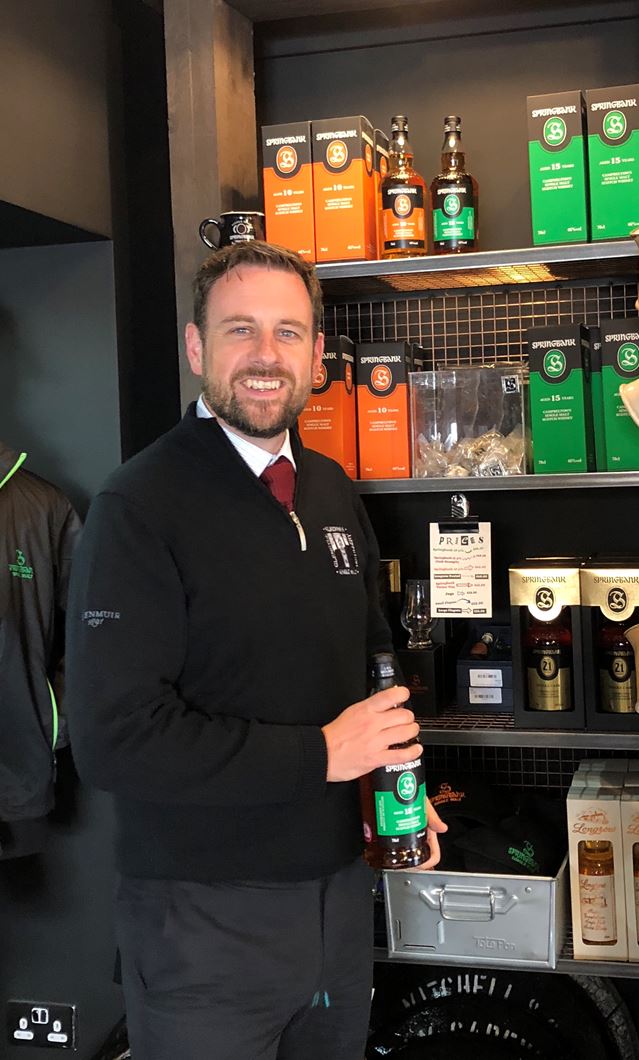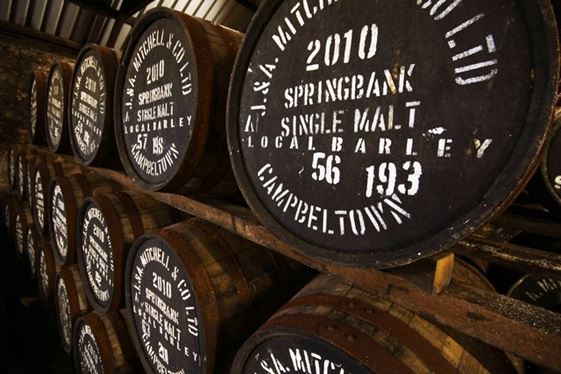
Springbank Distillery sits at the heart of Campbeltown in Scotland, and the past few years have seen its popularity soar among Scotch whisky fans.
The distillery was founded in 1828 by William Reid but by 1837 he was facing financial difficulty and sold it to his in-laws, John and William Mitchell. The distillery is still owned today by the descendants of the Mitchells, making Springbank one of Scotland’s last few family-owned independent distilleries.
Springbank focuses on traditional production methods, with 100% of the process – from malting to bottling – taking place on-site, something no other distillery in Scotland can claim. And with the distillery producing the most handmade whisky in Scotland, it’s easy to see the devotion and expertise which has turned Springbank into one of Scotland’s most celebrated distilleries.
Armed with your fantastic questions, we recently (virtually) sat down with Ranald Watson, Director of Sales & Marketing at Springbank, Kilkerran and Cadenhead's, ready to tap into his insider knowledge.
What are the best and worst aspects of working for a small, independent distillery?
There are so many positives, it’s hard to know where to start: the quality of the whiskies themselves is obviously pretty high up the list, as is the wide variety of styles we produce rather than aiming for one homogenised product. The ability to be involved in influencing the future of the company is something I particularly enjoy: being able to have an input into how much we distil, which casks we fill and what whiskies we will bottle is a great privilege and, I suppose, a big responsibility too.
However, two things stand out as the most positive things about working for J&A Mitchell: firstly, our commitment to never changing the way we make our whisky, never chasing profit over character and flavour and doing everything we can to maintain the traditional production and consistent quality of our whiskies; and secondly, the company’s commitment to providing as many jobs and opportunities for the people of Campbeltown as possible. I was born and grew up in Campbeltown and I can appreciate the challenges that living in such a remote part of the country brings.
It is to J&A Mitchell’s enormous credit that we currently employ 90 people, despite our total annual production between Springbank and Glengyle Distilleries being less than 400,000 litres of pure alcohol. It’s our intention to run the company in a sustainable manner so that we can continue to grow that number of staff and, at the same time, ensure those jobs are there forever, rather than running the distillery to make as big a profit as possible. To me, that’s the main benefit of being an independently owned company and not being beholden to shareholders and the consequential need to make as big a profit as possible.
There aren’t many negatives and I think the only real one is no having enough whisky to satisfy demand. On one hand, it makes my job a lot easier but it’s no fun saying no to people who want to buy more. It’s even less enjoyable talking to people who haven’t been able to get a bottle they really wanted while, at the same time, seeing people flipping the same whisky for vastly more money than we made from it, instead of drinking it! We’ve increased production recently so hopefully that won’t be a problem forever, the key for us is to produce enough whisky to satisfy demand but without having to alter our successful business model of working with smaller, independent whisky specialists rather than chasing supermarket or travel retail business.
If I could only buy one bottle of whisky you produce, which one would you recommend?
That’s probably the toughest question anyone could ask! If I can cheat a little bit, for me Springbank 10 is the best representation of the character of the distillery and the closest thing to a “house style”, with its briny-yet-sweet palate and gently peated finish. However, with its sherry cask maturation, Springbank 15 is a great introduction to the distillery, as the tannins and rich fruits from the oloroso casks round off some of the more robust flavours that you can find in the 10yo. That makes the 15 sometimes more approachable for someone who hasn’t tried a Campbeltown dram before and perhaps is more used to the lighter Speyside style.
With the latest release of Longrow 21, can we expect this to be an annual release?
Longrow 21 will be an annual release of around 3,600 bottles per year for the foreseeable future. I hope everyone enjoys it as much as I do! We generally plan on releasing Longrow 21 towards the end of each calendar year, although there may be some years where that changes due to the distillation dates of the whisky we’ll be using.
The rumour is that Hazelburn 21 is coming, can we also expect annual releases of that?
There will be some 21yo Hazelburn coming up but due to a lack of older stock there will only be enough for two releases of that in 2021 and 2022.
Any new offerings in the pipeline that you are particularly excited about?
Kilkerran 16 Year Old, which is due for bottling around August/September, assuming we manage to get back to work by then. If you like the Kilkerran releases we’ve done to date then don’t miss it. We’ll also be releasing a 17-year-old, Madeira-cask Springbank before Christmas that is another cracker.
Read pt.2 of our interview with Ranald, HERE.

